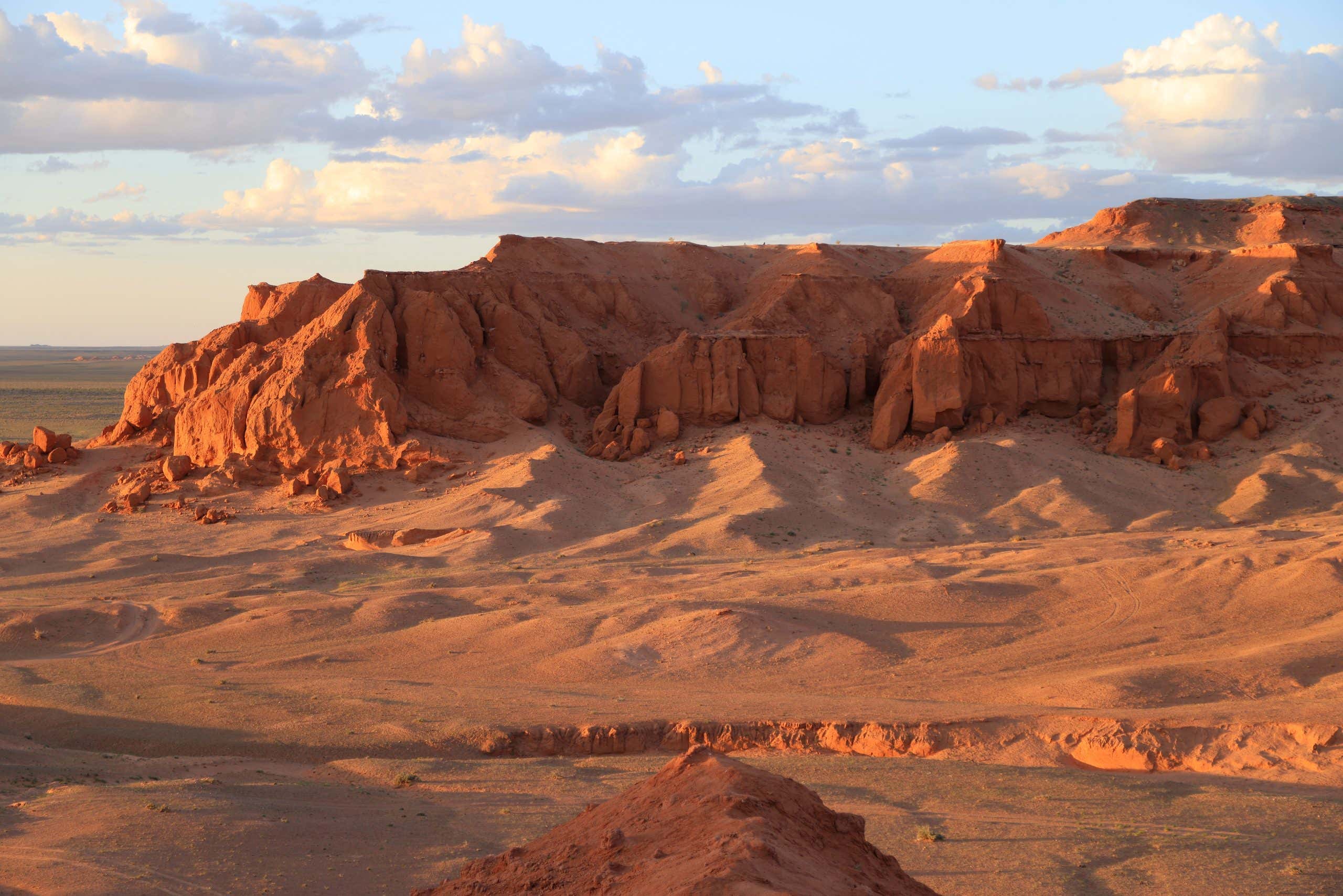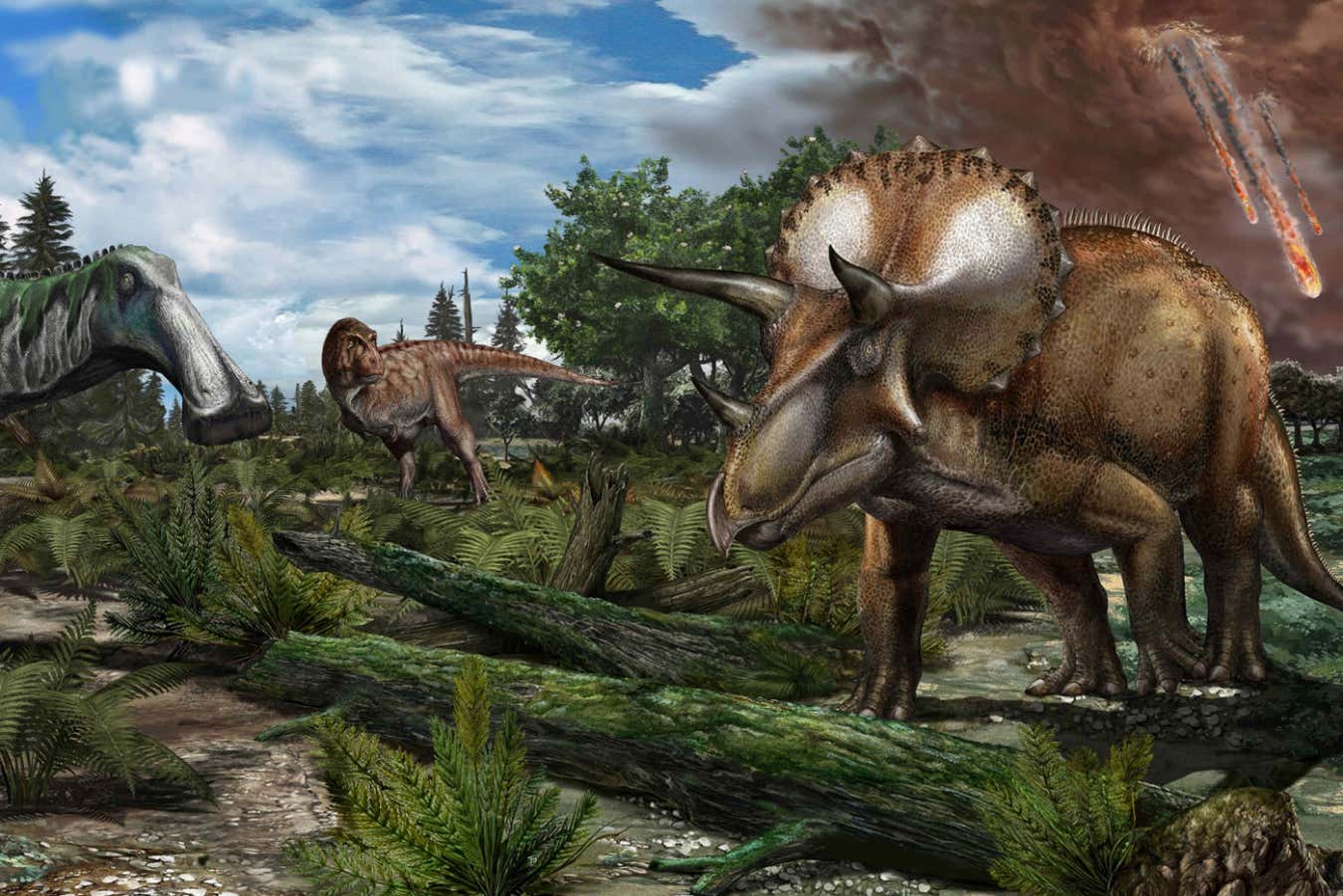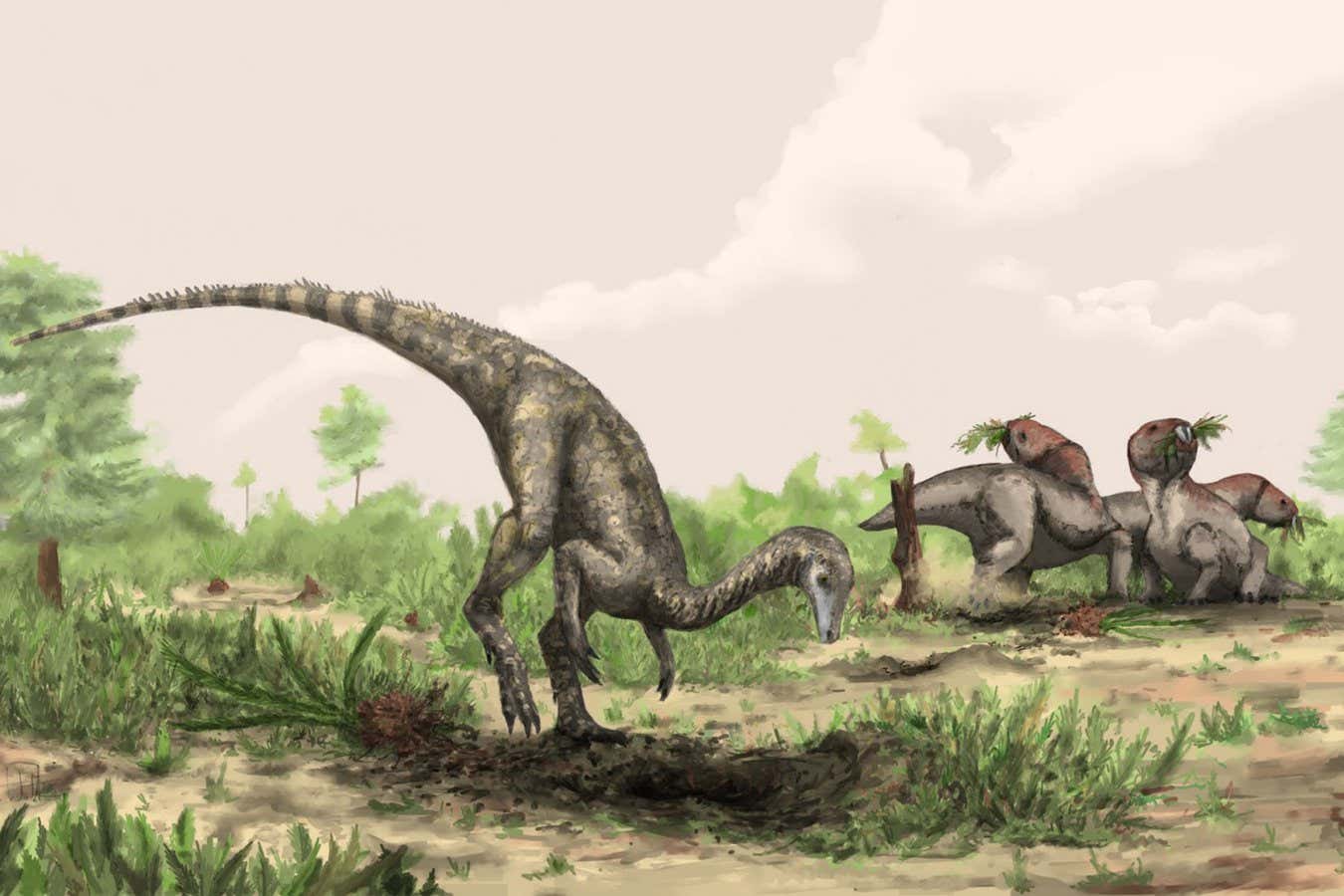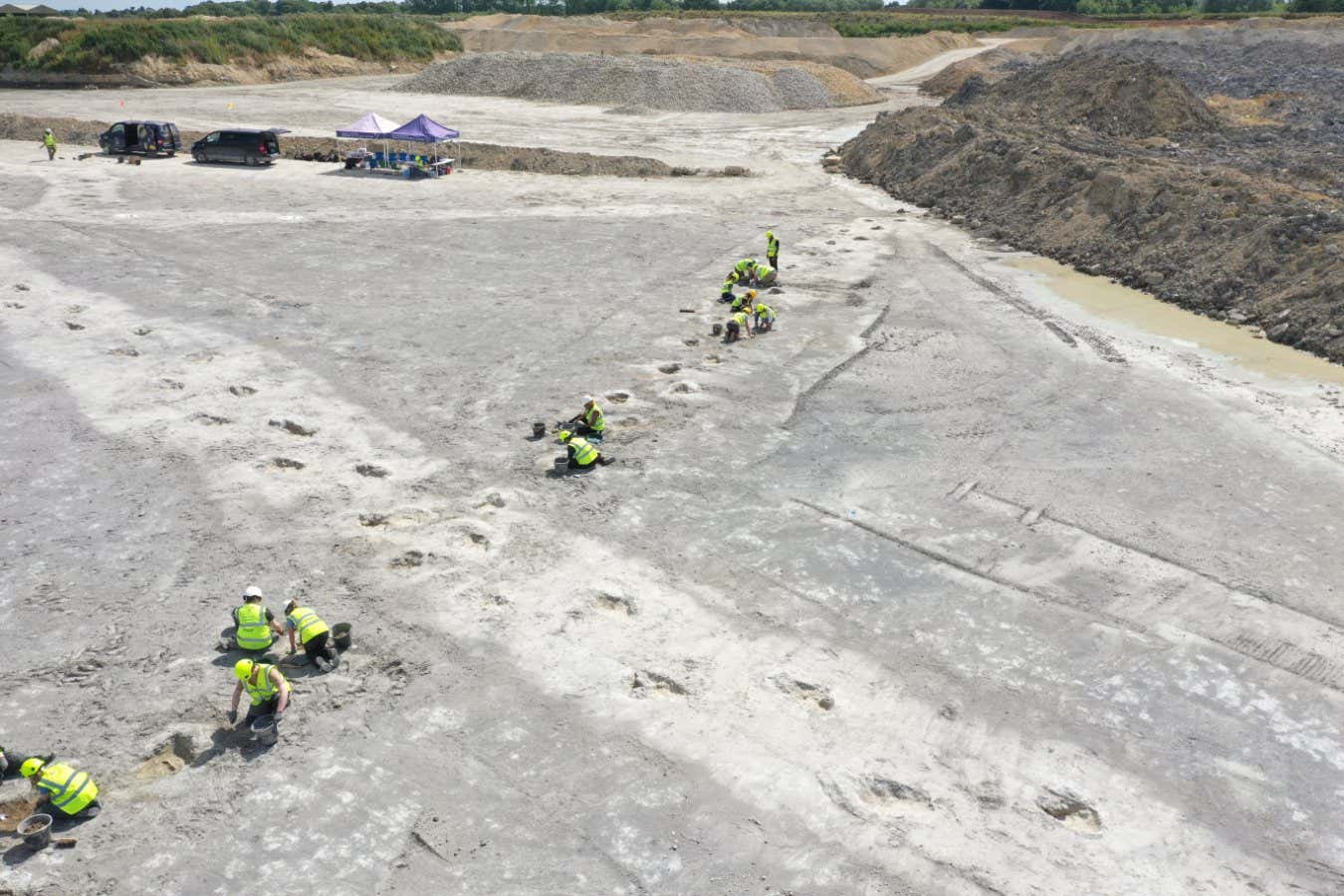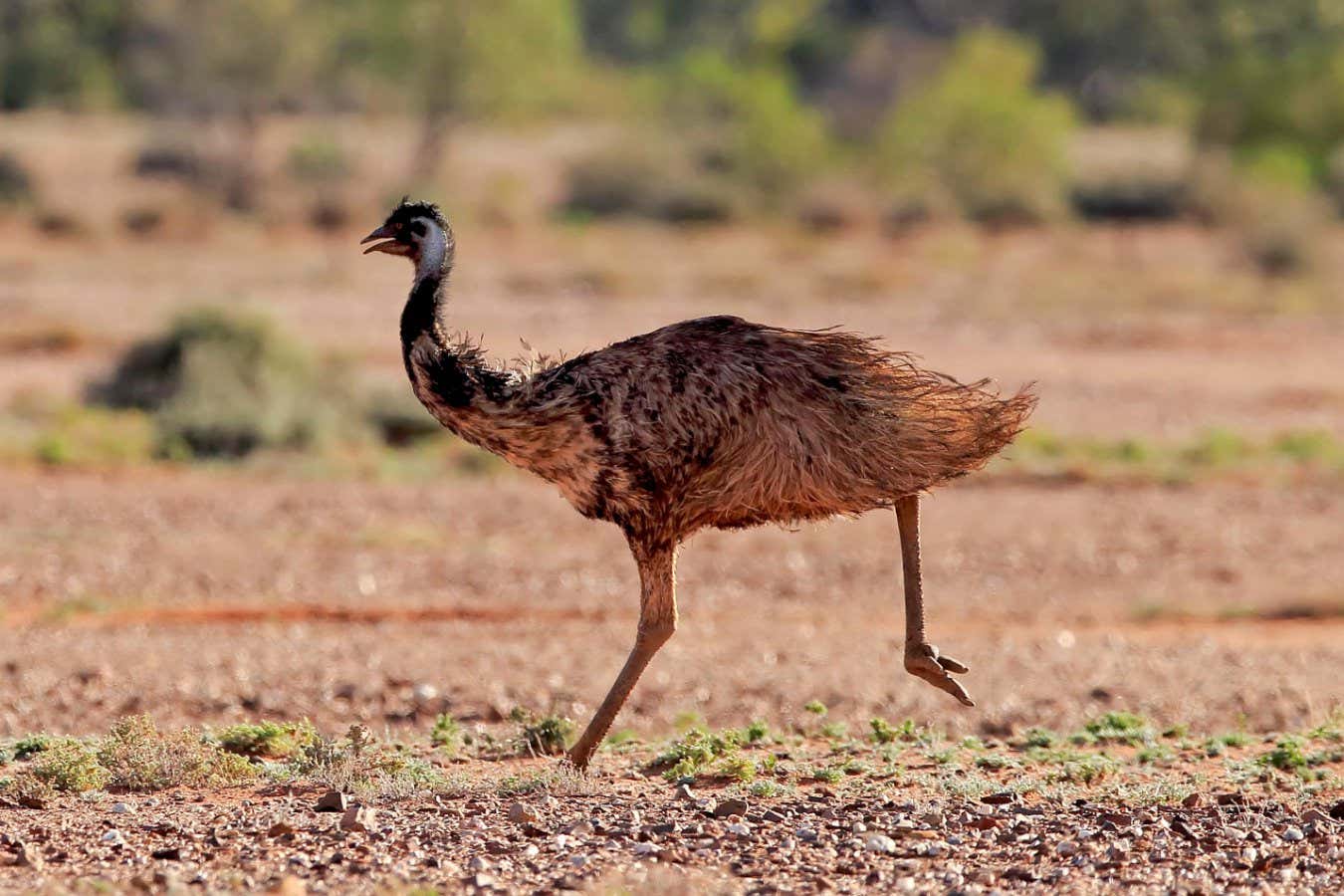Artwork showing a herd of ceratopsians accompanied by an ankylosaur walking through an old river channel, watched by two tyrannosaurs Julius Csotonyi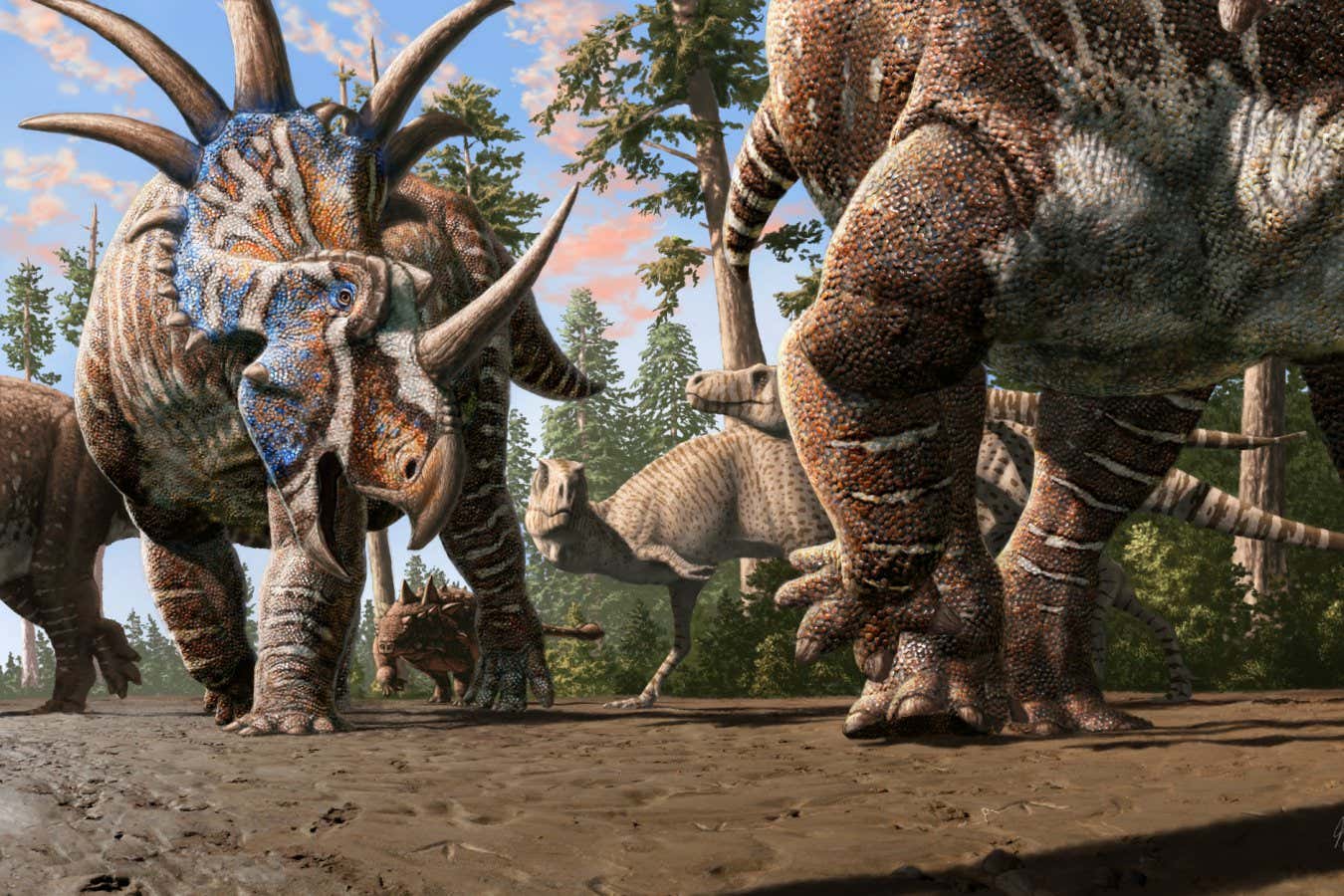
Did different species of plant-eating dinosaurs herd together for protection like many modern animals do? A set of 76-million-year-old tracks discovered in Canada might be the first evidence of this – but the case is far from closed.
Last year, Brian Pickles at the University of Reading, UK, and his colleagues discovered parallel tracks in Dinosaur Provincial Park in Alberta that were made by at least five individual animals.
Advertisement
“They’re all next to each other, and they’re equally spaced,” says Pickles. “So it suggests that they’re approximately shoulder to shoulder.”
Initially, the researchers thought all the tracks were made by ceratopsians, horned dinosaurs such as the famous Triceratops. They can’t be sure exactly which ceratopsid made the tracks, but fossil bones show that species such as Styracosaurus albertensis were present in the area at the time.
“As we were excavating, we realised that one of these sets of tracks wasn’t like the others,” says Pickles. “It’s about the same size, but it’s got three toes, and the only large animals that make footprints like that in the park at that time are ankylosaurs. So what we have is an ankylosaur in amongst a bunch of ceratopsians.” Ankylosaurs were heavily armoured dinosaurs with club-like tails.
Free newsletter
Sign up to The Earth Edition
Unmissable news about our planet, delivered straight to your inbox each month.

The tracks are thought to have been made near a river, so the ankylosaur may have been walking among the ceraptopsians simply because the animals were all heading to the river to drink at the same time, he says. But it is also possible that different species of herbivorous dinosaurs herded together for longer periods for defence. In fact, the tracks of two predatory tyrannosaurids were also found nearby.
“In modern African ecosystems, giraffes, zebras and wildebeest form these multi-species herds, and part of that is to do with different species having different abilities to detect predators,” says Pickles.
However, with just a single possible ankylosaur footprint found so far, the case for multi-species herding in dinosaurs isn’t conclusive.
A technician working on the tracks at Dinosaur Provincial Park in Alberta, Canada Dr Brian Pickles, University of Reading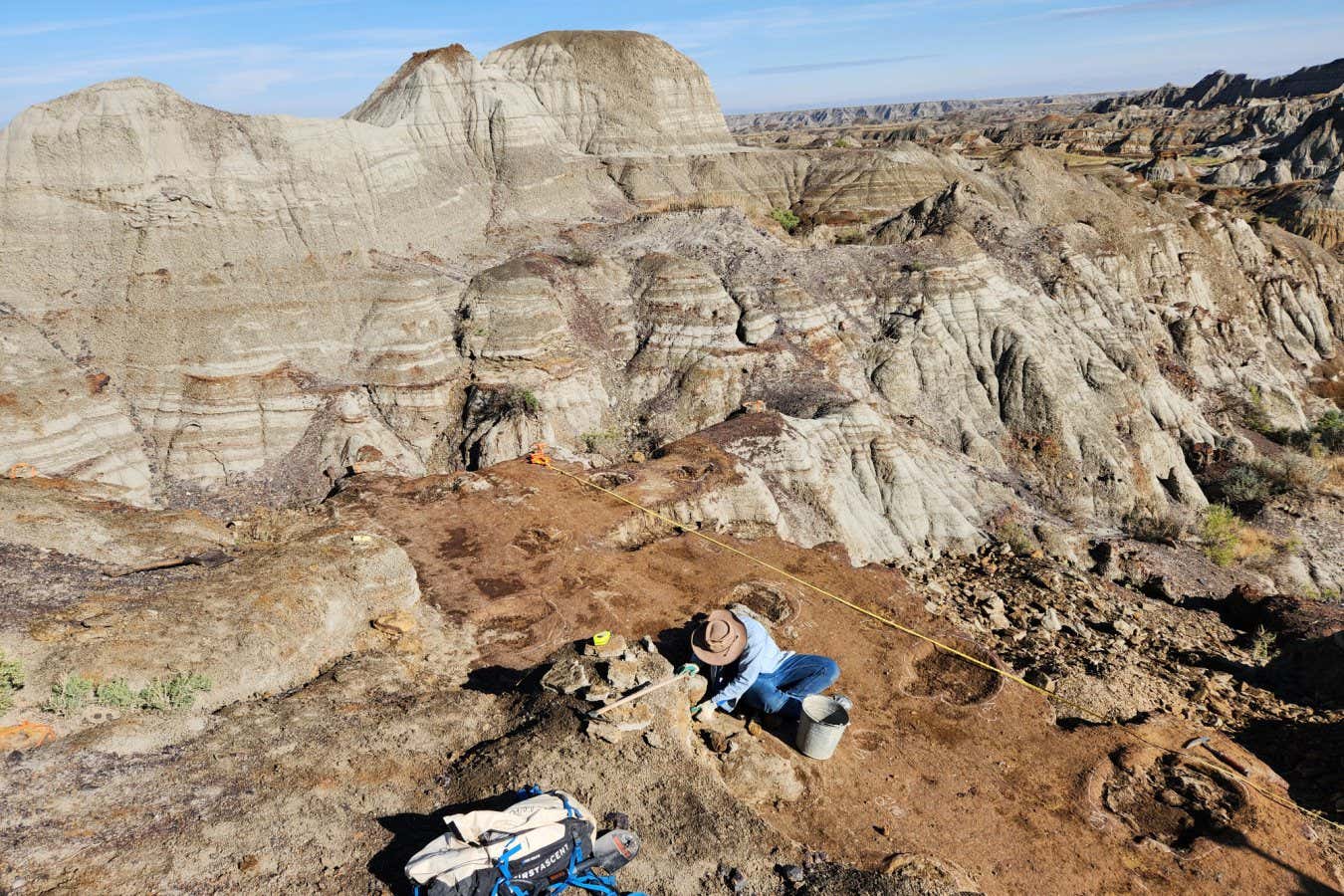
“Given [there were] tracks made by two different species of large, herbivorous dinosaurs in the same small area, but also pointing in the same direction, I’d say that’s tantalising evidence they were herding together,” says Anthony Martin at Emory University in Atlanta, Georgia.
“Sure, the ceratopsians and ankylosaur could have moved through that place at different times, but the closeness and spacing of their footprints make for a good argument that they were at least influenced by one another,” he says.
But Anthony Romilio at the University of Queensland, Australia, isn’t convinced two different species made the tracks. “The proposed ceratopsian and ankylosaur tracks look strikingly similar in shape,” he says.
In fact, based on the width of the tracks and the fact that only hind footprints have been found, Romilio suggests they were in fact made by duck-billed dinosaurs. “To my mind, these are more likely to be poorly preserved footprints of large-bodied hadrosaurs,” he says.
“This is not to say mixed-species groups did not occur in dinosaurs. Flocking birds, herding mammals and schooling fish are all known to form mixed-species groups,” says Romilio. “It’s entirely plausible that some dinosaurs may have done the same.”
Pickles dismisses Romilio’s suggestion about the tracks. “They definitely aren’t hadrosaur tracks,” he says.
Journal reference
PLOS One DOI: 10.1371/journal.pone.0324913
Topics:
